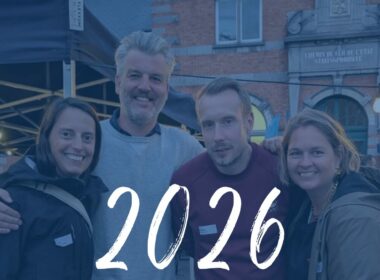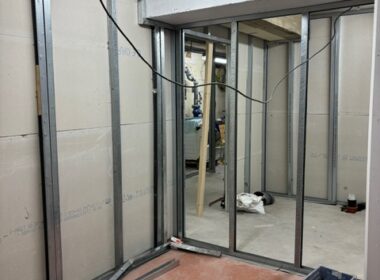One of the strategic pillars of the energy transition in Europe, designed to continue the effort to combat climate change, is the continuous improvement of the energy efficiency of buildings (construction and renovation). This represents one of the biggest potentials for saving energy and reducing CO2 emissions. Thus, in accordance with the European Directive on the energy performance of buildings (EPBD 2010/31/EU[1]), any new home built in Europe must meet the Nearly Zero-Energy Building (NZEB) standards. The European Union has left it up to each member state to define its own methods for achieving the minimum requirements of this NZEB level. This is the case in our three regions, the Brussels-Capital Region (BCR), Flanders and Wallonia, where each of them has been able to develop a system that is more or less comparable, but not identical, because it reflects the different development contexts specific to each region. Since 2013, Flanders has translated this directive under the name BEN (“Bijna-EnergieNeutraal”)[2] and since 1 January 2021, Wallonia has adopted the Q-ZEN (“Quazi Zéro Energie”)[3] standard. Meanwhile the BCR has focused mainly on its EPB certificate (2015) inspired by the “passive“[4] standard which goes even further than the NZEB which only represents the minimum to be reached in order to meet our climate objectives.
This minimum NZEB requirement means that all new constructions and major renovations must achieve near-zero energy consumption, equivalent to a Level A energy performance rating.[5] All NZEB buildings must now comply with certain conditions regarding energy performance, insulation, airtightness, ventilation, demand for heating/cooling and ventilation, heat transfer, heat production and risk of overheating.
An NZEB building must therefore be well designed, better insulated and sealed, but also sustainably and more efficiently ventilated and air-conditioned.
- This means that buildings’ primary energy needs will become less significant, at least those required for heating, because the advantage of complying with a minimum NZEB standard is that a constant heat can be maintained throughout the year with a lower energy consumption that can be covered by local renewable energy sources, for example.
- In addition, according to climate experts, summers are generally becoming warmer. Consequently, a gradual shift in building energy demand from heating in winter to cooling in summer is expected. It is also expected that traditional oil-fired (and gas-fired) boilers will gradually be replaced by heat pumps. This trend is already visible in Flanders, which is progressively switching to hybrid heat pumps that will be mandatory for all new homes from 2023. This is also supported by the ban, from 2026, on all new connections to natural gas and the creation of a financial incentive for the installation of heat pumps in existing homes. Wallonia and Brussels also seem to be planning for the end of oil-fired heating. From 2025, the BCR will ban the marketing of oil-fired heating systems, while Wallonia plans to ban its marketing by 2030.
- Ventilation and heat recovery are also becoming an undeniable standard in buildings. Double flow with heat recovery is practically unavoidable in minimum NZEB buildings, especially in view of the new air quality/air exchange rate requirements (CO2, humidity, particles, etc.) which have increased in recent years with the COVID-19 pandemic and the growing need for remote working. This means installing better controlled, optimised and scalable HVAC systems, integrated with solar systems, combined heat and power, daily and/or seasonal storage as well as shared neighbourhood schemes (energy communities, etc.).
- The majority of a building’s energy demand will therefore increasingly be covered by local renewable energy sources (solar PV, solar thermal, etc.) which will also provide a “smart”[6] supply to other consumers (washing machine, dishwasher, hot water production, etc.). Furthermore, the current trend is to increase a building’s renewable energy self-consumption rate as much as possible, or even, if future regulations and the new tax system allow it, to position itself as an electricity producer by installing oversized solar PVs within a future energy community. Efficient systems will therefore need to be installed which are suited to customers’ end needs in which high-tech may not always be the best solution, especially in a “well-designed and well-insulated” building for which low-tech solutions can also be considered (e.g. “Tiny house” type of housing).
It is in this context that electrical installers will play an increasingly key role in implementing the energy transition across our three regions. It is obvious that the priority will be to work on the building envelope including in terms of insulation, waterproofing, orientation and the use of natural light, in order to reduce final needs in air-conditioning, lighting, etc. The integration of local renewable energy systems (solar PV, etc.) can then be optimised in the NZEB design (including passive).
From this stage on, electrical installers will be able to use their expertise and field experience to provide better advice to customers and guide them towards the special technical solutions appropriate to their needs (automation and/or decision support systems, predictive control and optimisation, comfort level and energy performance, smart energy management systems, etc.), but also to maintain the installations.
The involvement of the electrical engineering sector in the climate strategy of buildings has become even more pronounced with the recent introduction of electromobility into the EPB. Indeed, the deployment of electromobility devices and the creation of energy-efficient buildings are intimately linked. According to the European authorities, buildings are even an important lever for the deployment of electromobility. A number of requirements have been set for buildings to install charging stations and infrastructures required for electric vehicles.
Consequently, the electrical installer is now a key participant in the energy transition, not only in building construction and renovation, but also in the deployment of the associated electromobility infrastructure. This transition is taking place in a context of accelerated electrification and digitalisation, in which a building’s technical installations are increasingly controlled “intelligently” and monitored remotely. This trend has been reinforced by the ongoing deployment of new electricity smart meters and energy management and control systems such as Customer Energy Management Systems (CEMS) [7] throughout the country.
In conclusion, these NZEB standards (including passive ones) are a unique opportunity for electrical engineering professionals to provide their essential and complementary expertise. The energy transition, which follows the development in the construction sector’s objectives and requirements, will be facilitated.
Further information can be found at: https://www.volta-org.be/
Author: Gregor Probst, Technology Advisor, VOLTA
Read also: ORI highlights the role of consultancy and engineering firms in Brussels; Agglomerated stone and digital manufacturing techniques to restore heritage buildings; For responsible builders; Estimation of requirements and circularity; The social economy unites partners with respect to sustainability.
[1] https://eur-lex.europa.eu/LexUriServ/LexUriServ.do?uri=OJ:L:2010:153:0013:0035:en:PDF
[2] https://www.vlaanderen.be/bijna-energieneutraal-bouwen-ben
[3]EPB regulations (Wallonia): https://energie.wallonie.be/fr/reglementation-wallonne-sur-la-peb.html?IDC=7224
[4] https://environnement.brussels/thematiques/batiment-et-energie/obligations/la-performance-energetique-des-batiments-peb
[5]https://document.environnement.brussels/opac_css/elecfile/IF_NRJ_ResultatCertificatPEB_FR?_ga=2.158344178.970212847.1640267937-1346142802.1640267937
[6] It is always better to try to do without energy (not needing it) than to produce it in a renewable way.





